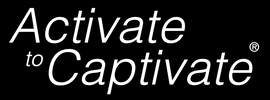 Using filler words can become a habit. That’s because the more your ear hears these filler sounds (um, uh, like, so), the more often you repeat them. After listening to hundreds of presentations, I’ve noticed a pattern of when filler words are used. If you can focus on these moments, you can cut down on the majority of the filler words in your presentation. 1. Introduction When people begin a presentation, they often don’t know exactly how to start. They know the first subject they will bring up, but they haven’t practiced how they will thank the person who introduced them or how they will quiet down the room. By not having a clear idea about how they want to begin, filler words start to appear. Fillers are used to give the presenter time to figure out what to say. To avoid this, practice a few introductions — and most importantly — practice them without filler words. That way, your ear won’t hear filler words in the beginning, and therefore, won’t rely on using them throughout the rest of the presentation. 2. Point of Focus Filler words also emerge when a presenter isn’t sure where to look. In the virtual presentation world, this often happens when a presenter is trying to navigate from their presentation screen to answer a question in the chat box. They are trying to figure out a point of focus, and during that time, filler words pop out. When presenting in person, fillers slip out when the presenter is turning their head from the audience back to the screen with their PowerPoint, and vice versa. Presenters rely on filler words to fill the “time” that it takes to find a new place to look. To give yourself something else to do when refocusing, try exhaling. That way, you get a moment to breathe and your message won’t be distilled with filler sounds. 3. Transitions Filler words are also heard when people are transitioning from one idea to the next. People use sound to fill the pause of moving from one idea to another. It's a crutch presenters lean on to subconsciously tell the audience, “Don’t worry, I’m still in control.” Instead, try pausing between ideas. Pauses are incredibly useful. If there is a constant stream of noise, nothing will stand out. That’s why you want to practice pausing between ideas. This way, your ideas won’t blend into one another, you cut down on filler words, and your presentation becomes much more engaging. It’s a good idea to practice key moments without fillers. This includes the introduction, pausing between points of focus, and between transitions. If you do this, your audience can focus on what’s really important — your content and ideas. |
AuthorBri McWhorter is the Founder and CEO of Activate to Captivate. Categories
All
Videos
Archives
June 2024
|
Click to Contact
© 2014-2024 Activate to Captivate, LLC
All Rights Reserved
All Rights Reserved

 RSS Feed
RSS Feed
